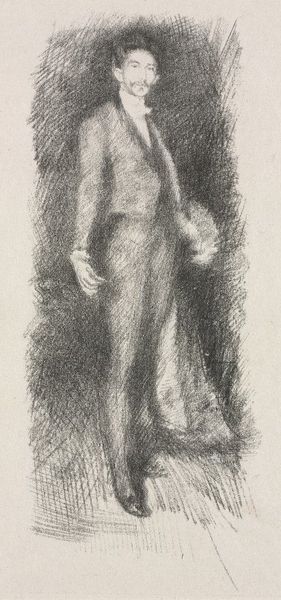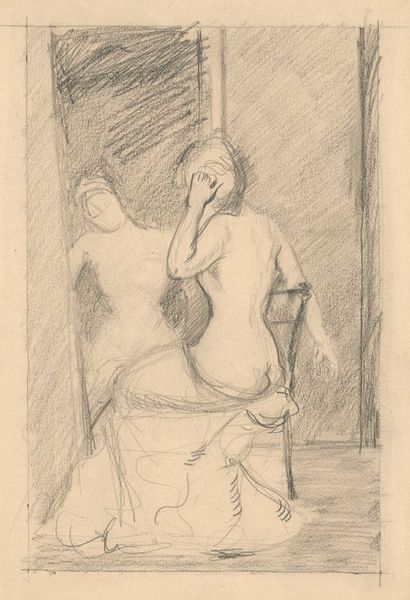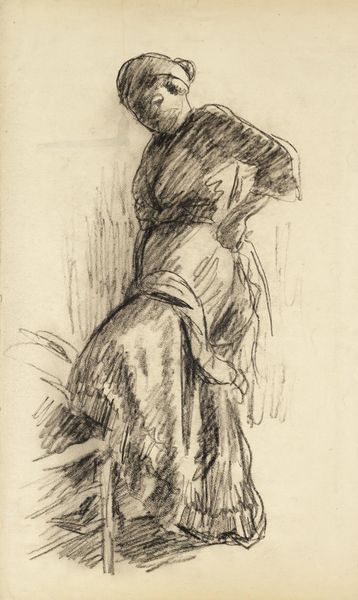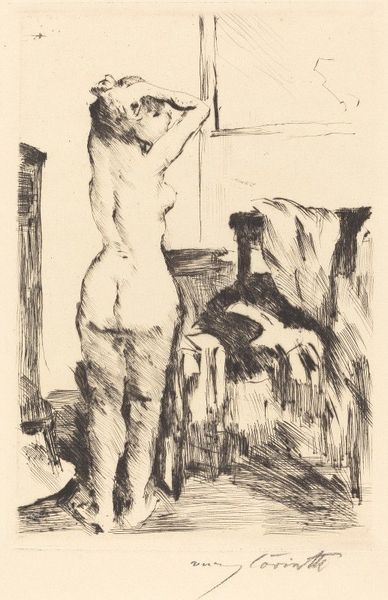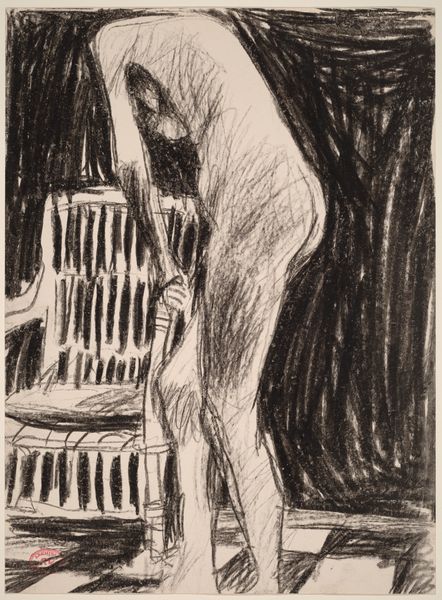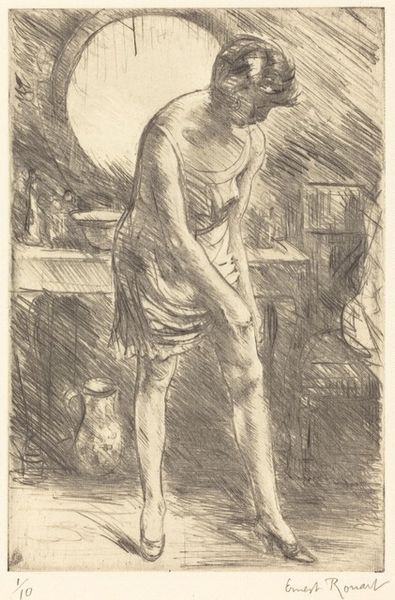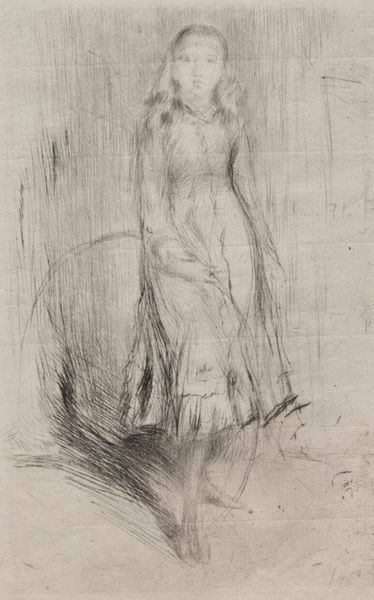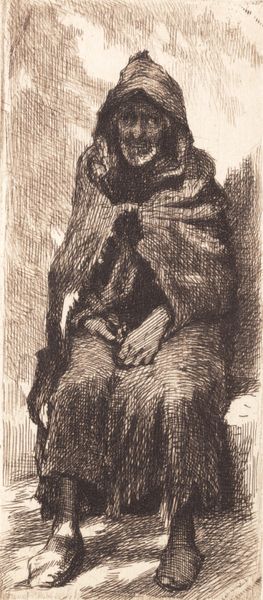
drawing, pencil
#
portrait
#
drawing
#
figuration
#
pencil
#
academic-art
#
nude
Dimensions: height 188 mm, width 105 mm
Copyright: Rijks Museum: Open Domain
Editor: We’re looking at “Study of a Nude Woman, Seen from the Back” by Carolus-Duran, made sometime between 1848 and 1917. It's a pencil drawing, and I find it both intimate and a bit melancholic, maybe because of the limited color palette. What do you see in this piece? Curator: The beauty of academic drawing lies in its capacity to convey a wealth of symbolic meaning, even with a simple medium like pencil. Notice the positioning of the figure with their back to us. How does this evoke ideas of privacy, perhaps introspection? Is it vulnerability or defiance? The unseen face sparks a yearning to imagine the inner life behind the posture, as well as wonder what’s suggested in shadow. Editor: That's interesting. I hadn't thought about the averted gaze as a deliberate choice carrying such weight. It feels less like a portrait and more about a state of being. Curator: Precisely. Think of classical depictions of Psyche, or even more broadly the persistent fascination with the "female nude" throughout history. These images aren't just about form; they are infused with centuries of cultural ideas about women, beauty, and the relationship between the observed and the observer. Do you think this work accepts or subverts such traditional interpretations? Editor: It's definitely more subtle. Maybe it suggests more psychological depth than earlier nudes. Thank you! I have more to consider now than when we started. Curator: My pleasure! Visual symbols are indeed the building blocks of culture and this understated drawing really highlights their power.
Comments
No comments
Be the first to comment and join the conversation on the ultimate creative platform.

